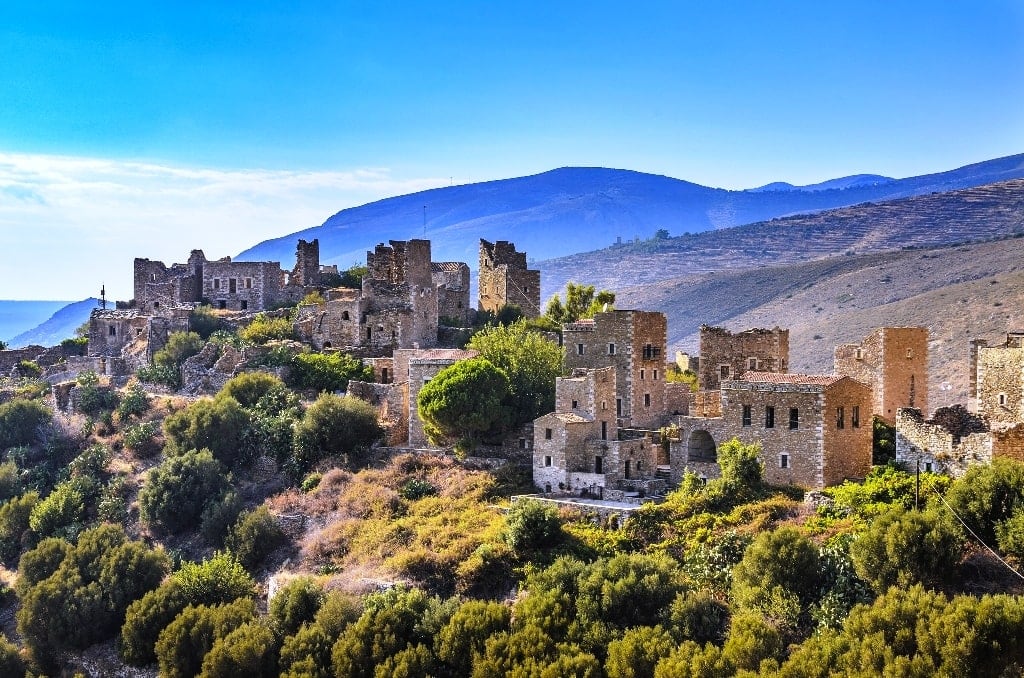Greece is truly a land of wondrous variety. Just like the several different island clusters in Greece are starkly diverse, so is Mainland Greece.
In Mainland Greece you will find a bit of everything: you will be able to lounge on sandy beaches with sparkling crystal waters and enjoy your fresh fish in several small traditional fishing villages.
You will also have the chance to experience the gentle hills and the sharp, craggy heights of iconic places you can’t find anywhere else, travel back in time as you walk in the narrow streets of fortified towns and medieval fortresses, and look at the ubiquitous surrounding glamour of antiquity, from the Ancient to the Hellenistic to the Roman eras.
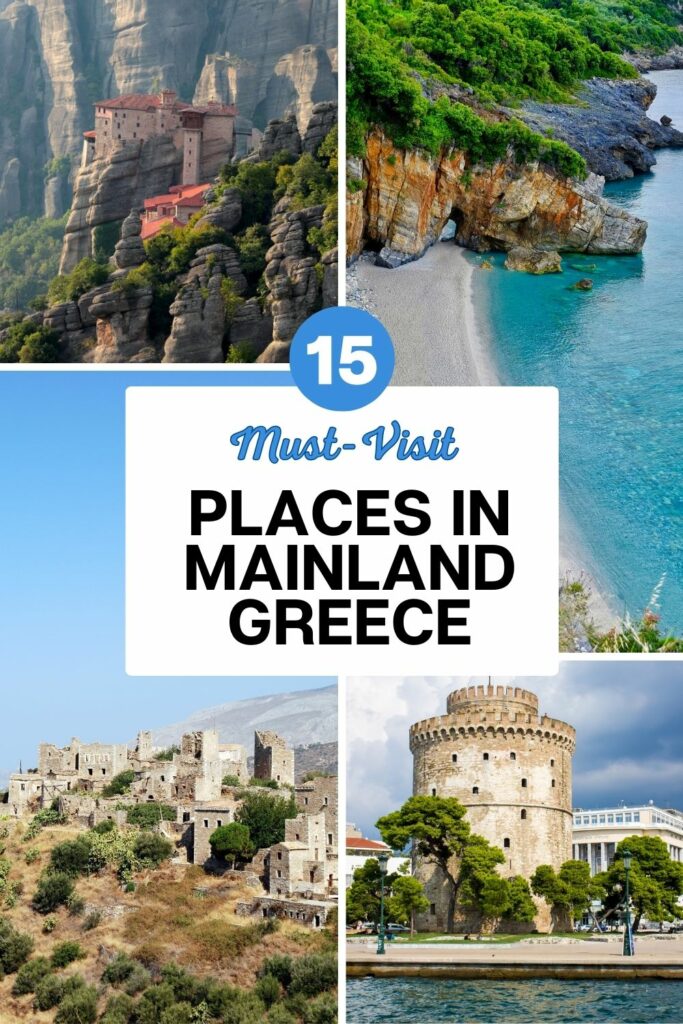
Disclaimer: This post contains affiliate links. This means that should you click on certain links, and then subsequently purchase a product, I will receive a small commission.
What Consists of Mainland Greece?
Mainland Greece is the southernmost part of the Balkan peninsula. At its North, there are the regions of Thrace and Macedonia. There you will also find the smaller peninsula of Chalkidiki, which looks like a three-fingered hand jutting forth into the Aegean.
Going further south, you will come upon the regions of Epirus and Thessaly, and right below them the region of Central Greece. It’s in Central Greece where Attica and the capital city of Athens are located.
Even further south, we reach the Isthmus of Corinth, the narrow strip of land to which the second, far bigger, peninsula of the Peloponnese is naturally attached. The Corinth Canal connects the Saronic and Corinthian Gulfs formed on either side of the Isthmus.
Each of these regions has its unique character and look, not only when it comes to nature and the sites of outstanding natural beauty (of which Greece has several) but also in architectural style, customs and folklore, local heritage and culture, local differentiation in terms of cuisine and delicacies, and even daily rhythms and routines!
What is also amazing is that this wide diversity is all part of the Greek experience, and despite the wide variety, the unique Hellenic imprint within the hearts of the locals and the overarching traditions remain the same.
Mainland Greece has so many gems you shouldn’t miss, that a short vacation simply won’t allow you to manage them all. You will need to go again and again, and each time will be so unique it will be tantamount to visiting a new place and a new spin on the Greek identity.
Map of Greece / Mainland Greece
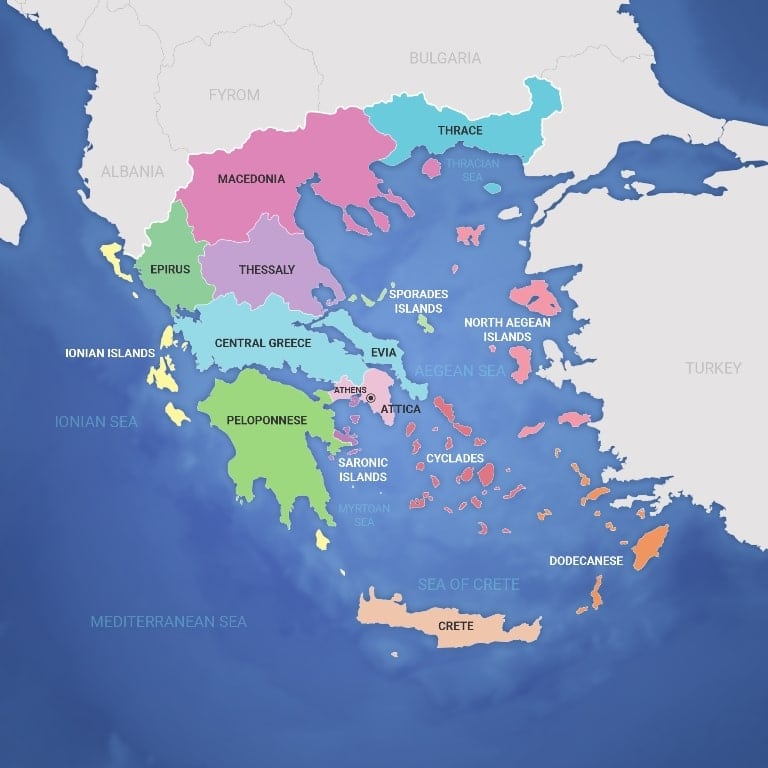
The 15 Best Places to Visit in Mainland Greece
Mainland Greece has so much to see that it’s easy to lose track of where to go and what to do. So, your best bet is to start with the classics: the best places to visit in Mainland Greece, not only by popularity but also by common consensus of the Greeks themselves!
1. Athens

Athens is the capital of Greece. It is the oldest capital city in Europe and the second oldest continuously inhabited city in Europe after Plovdiv, in Bulgaria. It is, as already mentioned, located in Attica, in Central Greece.
Athens herself is enough to fill your vacations to the brim! It is a time capsule that can take you to the earliest times in antiquity, allure you with the mysticism of Byzantine sounds, art, and fragrances, shock you with the ravages of modern warfare, and the stunning powerful stands made by the Greeks throughout history and charm you with heartfelt music and urban beauty.
At the same time, it can treat you to amazing culinary delights of local and international flavors, give you spectacles and spontaneous events by buskers and professional musicians performing for free, and invite you to stroll through its various different neighborhoods that are so unique it’s almost unbelievable.
Start from Athens’ heart, the historical center, and the neighborhood of Plaka, visit the iconic Syntagma Square and watch the changing of the guard at the Tomb of the Unknown Soldier, and let your sense of adventure guide you!
2. Thessaloniki
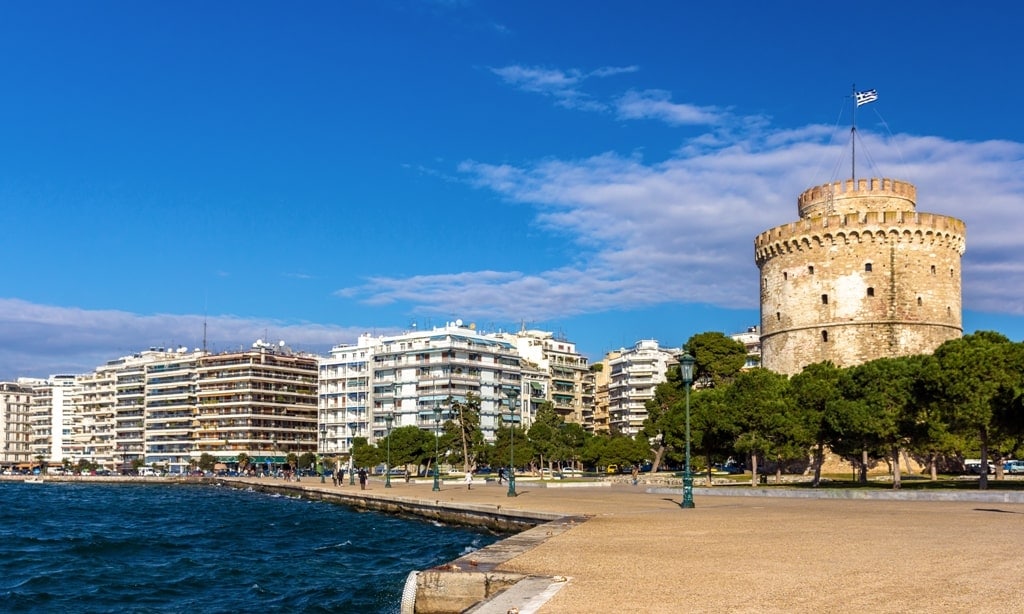
Thessaloniki is called “the co-capital of Greece” by the locals, and it is for a reason! It’s the second-largest city in Greece and one of the most beautiful and most beloved.
Thessaloniki enjoys international renown for its picturesque seaside promenades and extreme ‘walkability’. Walking along its various paved streets you will encounter several archaeological sites ranging from ancient Greek and Roman ruins to imposing, stunning Byzantine churches you should definitely visit.
Thessaloniki is also famous for its amazing cuisine, which includes street food and snacks. Make sure to have the morning “bougatsa” pastry (you’ll need to hurry; it flies off the racks!) and take a tour of the “Ladadika” quarter for good food and wine!
Lastly, Thessaloniki’s vistas will take your breath away. Visit the “Eftapyrgio” castle to see her all sprawled before you with the Thermaikos bay glistening in the background.
3. Meteora
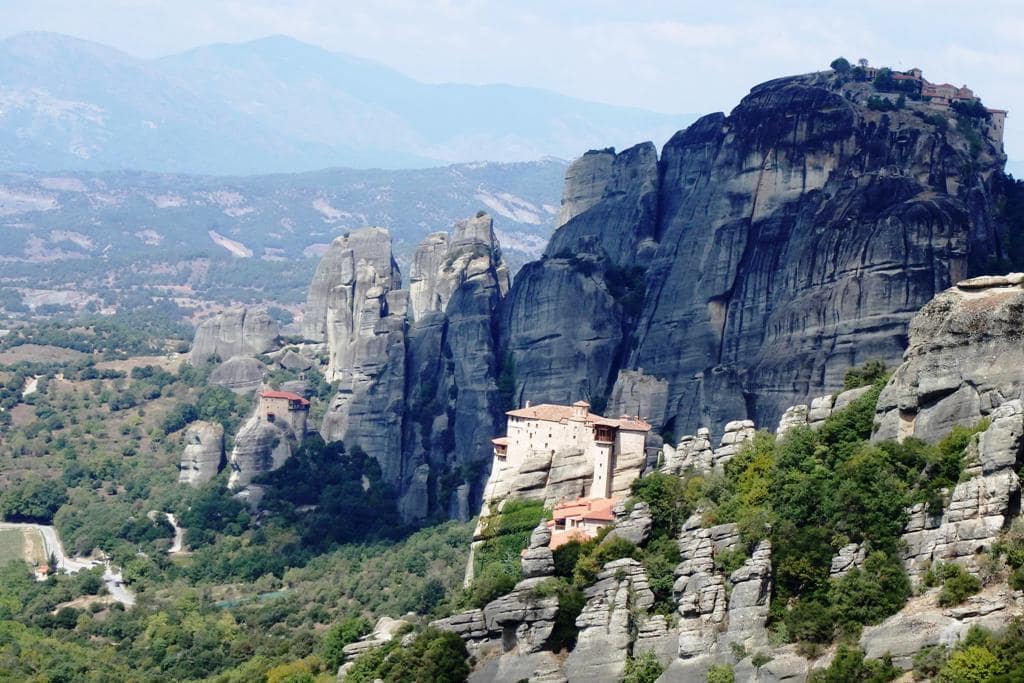
Meteora is an awe-inspiring place of mysticism and wild, unfettered beauty. Located near the town of Kalabaka, overlooking the plain of Thessaly, Meteora is a stunning formation of rocks that seem to defy gravity and geological logic.
Jutting up sharply from the ground, with sheer cliffs and drops so high one could fall forever, Meteora’s giant rock columns draw climbers from all over the world. Since they are not volcanic or hard igneous rocks, the only tentative theory about how they were formed is that they were created by prehistoric rivers over 60 million years ago.
That unique natural monument aside, Meteora also is the location of the most precariously built conglomeration of Eastern Orthodox Monasteries dating from the 11th century you can find and the second most important after Mt. Athos. UNESCO has included Meteora in the World Heritage List.
Meteora is the ideal destination for hiking, kayaking, cultural tourism, great monastic, and Thessalian cuisine, and a tour into medieval times while overlooking vistas only birds usually see. Meteora receives about two million visitors per year.
4. Delphi
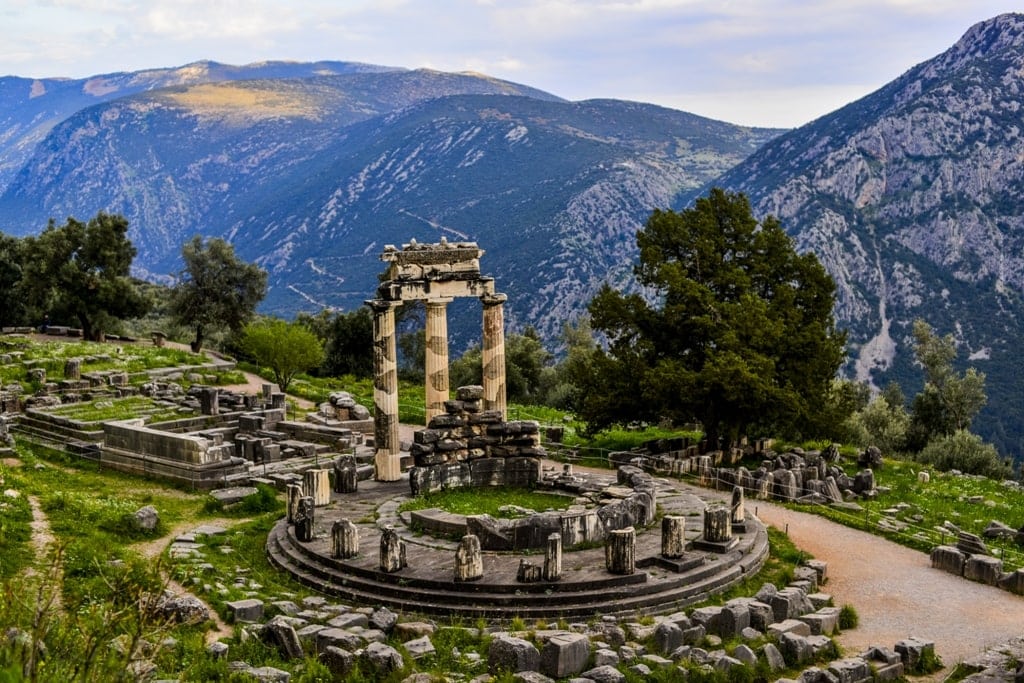
Delphi is famous for its ancient Oracle of Delphi, which is mentioned so often in the works of ancient creators. An ancient pilgrimage site for Greeks of all cities, the Oracle was believed to give the god Apollo’s words to the faithful and make predictions that were often quite arbitrary and hard to decipher. You will find it 6 km from the Gulf of Corinth at the slopes of Mt. Parnassus.
Visit the ancient site, which is a pretty big complex, and then rest at the beautiful village of Delphi before driving back to Athens or going on to other exciting places like the traditional town of Arachova.
5. Mani Peninsula
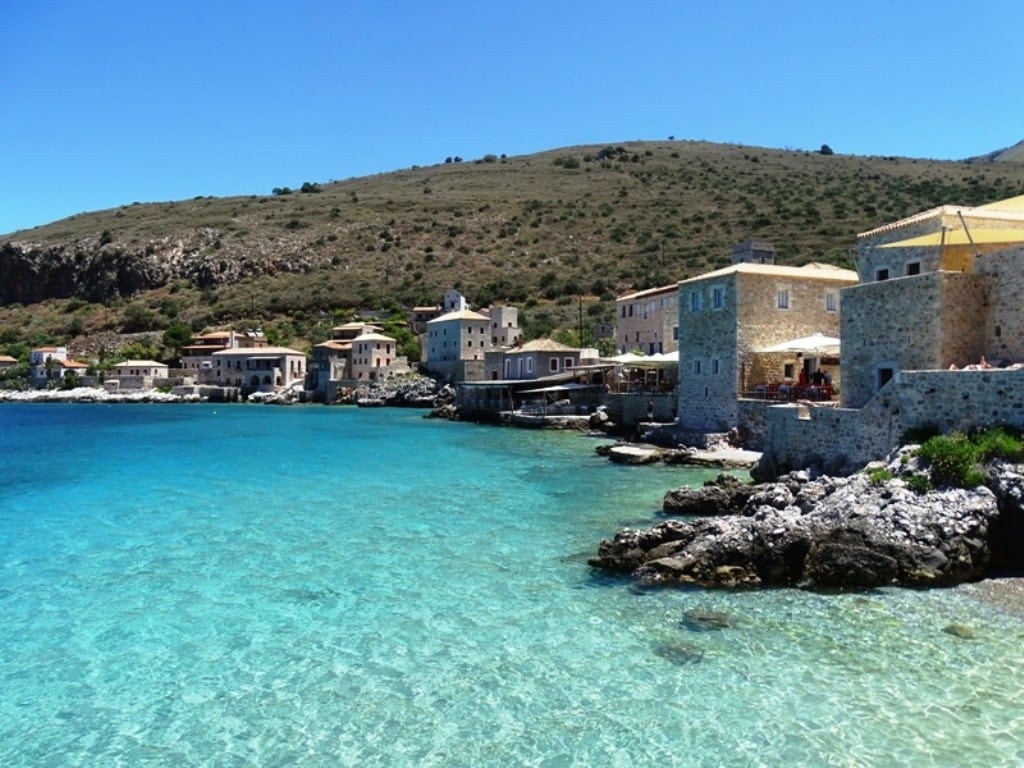
Mani is an entire region in the Peloponnese. It is a tremendously important area in the middle of the three small peninsulas of the Peloponnese. You will need a car to explore the up to recently unreachable Mani with the stone tower houses and fortified villages, the stunning beaches, and the lush verdant slopes of Mt. Taygetos that mesh with the white stone that gleams in the unforgiving sun.
Mani is one of the few regions where Ottoman Turks didn’t settle during the four-century occupation, and thus the Greek and Byzantine heritage has evolved with minimal to no influences from them. Enjoy Mani’s excellent food and local delicacies, marvel at the nearly 2000 Byzantine churches, the several castles and castle cities, and fall in love with it forever.
6. Ancient Olympia
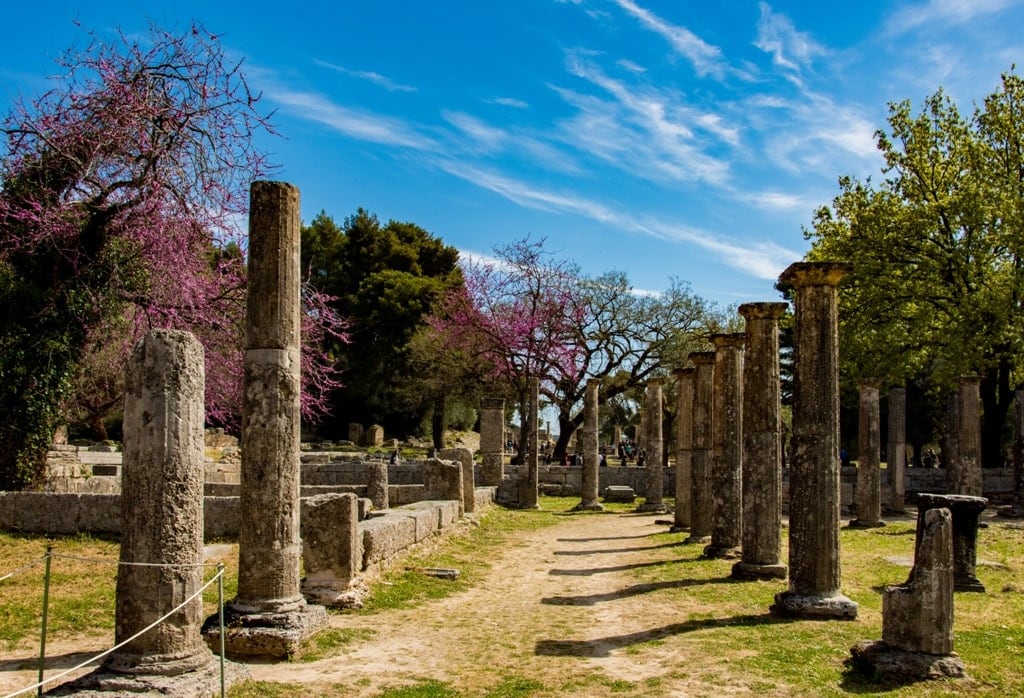
Ancient Olympia is the birthplace of the Olympic Games! It is where the Olympic Flame is still lit today every four years. It is also the location of one of the seven wonders of the ancient world, the temple of Zeus with the 13.5-meter-tall gold and ivory Zeus statue. Unfortunately, that is no longer there but the site remains, for you to fathom the sheer scale of it all.
Visit the museums in Ancient Olympia to enjoy with your own eyes the statue of Hermes by Praxitelis. Visit all the other ancient venues, and time your visit with the annual Ancient Olympia Festival which features great musical, theatrical, and dance performances.
7. Zagorohoria and the Vikos Gorge
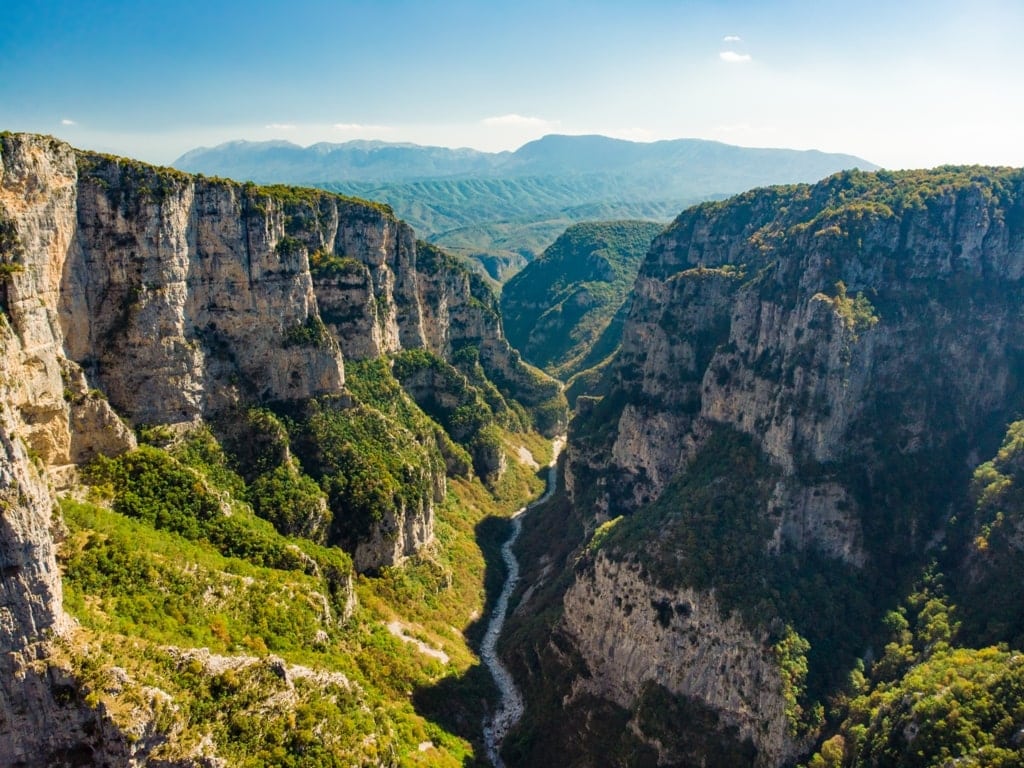
Hidden away in the lush forests of mountainous Epirus, Zagorohoria is a cluster of 46 gorgeously picturesque villages built out of stone, with iconic stone bridges over crystal-clear burbling creeks and rivers. The architecture of Zahorohoria is unique in Greece, as is the traditional, highly rustic connection between them all.
It is a great location for relaxed vacations surrounded by beauty and good food, but also for high-action ones if you are for sports like climbing, hiking, kayaking, and rafting! In Zagorohoria you will also have the chance to visit the breathtakingly beautiful Vikos Gorge, which is the deepest gorge in the world after the Grand Canyon.
8. Kastoria
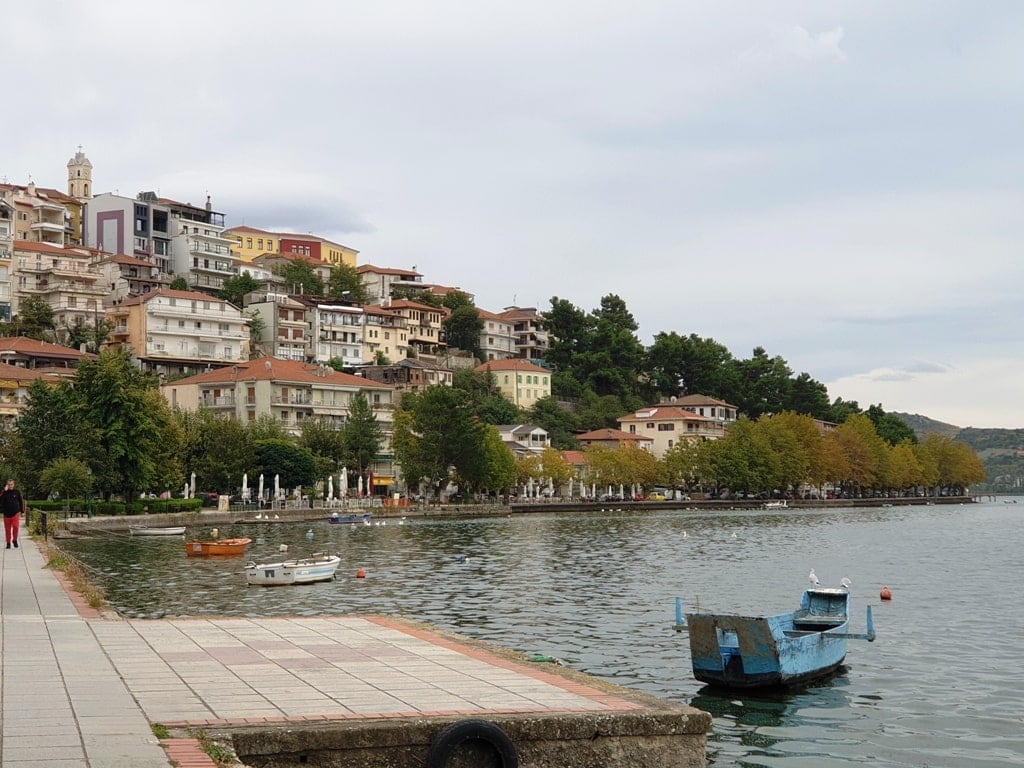
The city of Kastoria is also called “the Noble Lady of Macedonia”. Situated near the glistening waters of Lake Orestiada, with the imposing mountains of Grammos and Vitsi, Kastoria is one of the most beautiful cities in the region of Macedonia.
Boasting gorgeous promenades lined with great plane trees and oaks, as you walk Kastoria’s streets and paths you will be imbued with a sense of relaxation and lightness. Walk in its various iconic neighborhoods with stone two-story houses, several of which have been turned into museums of folklore and heritage.
Visit the Drakos Cave with the seven cave lakes and gorgeous ten chambers. Learn of the city’s great tradition of fur making which made it thrive in the 17th and 18th centuries and enjoy the famously tasty Macedonian food!
9. The Prespes Lakes
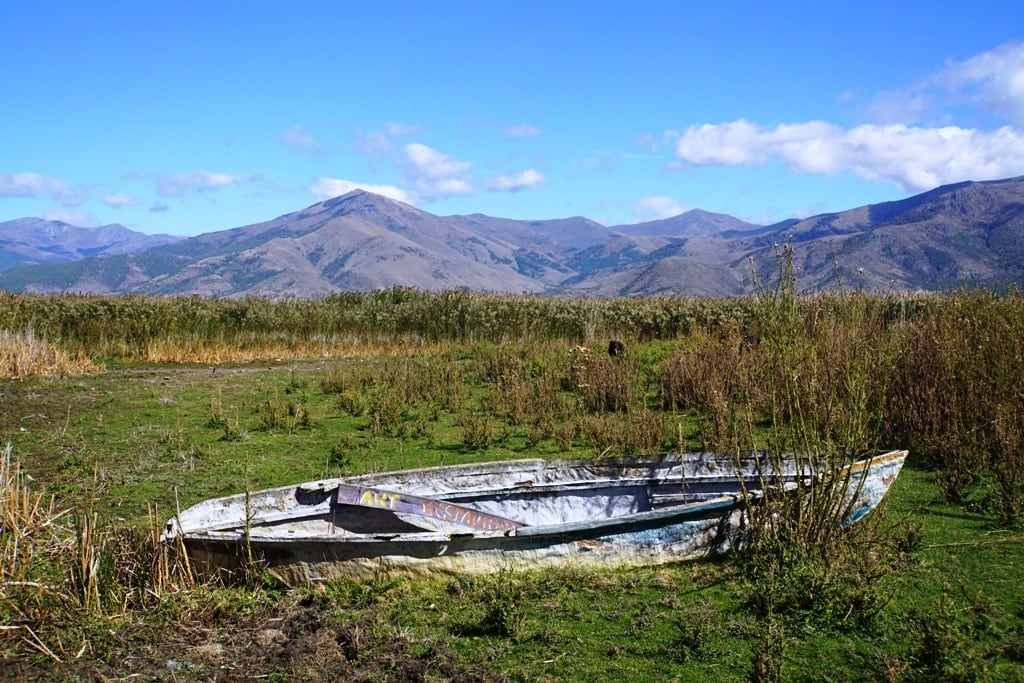
These two high-altitude lakes are located right on the borders and are shared by Greece, Albania, and North Macedonia. The Greek part of the lakes, located in Macedonia, features a National Park that covers all of the Mikri (Small) Prespa and its surrounding area. Several endangered species of birds and other animals and plants find sanctuary there.
Right next to the Prespes is the protected ancient cedar forest Mt. Devas. Take a boat from the small village of Psarades to view the wildlife as well as the medieval small monastic structures of monks that lived in the area. Watch the dance of the pelicans and visit the great Byzantine churches in the nearby villages as well as a surprise gorgeous view of the Megali (Big) Prespa at Cape Roti.
10. Mt. Pelion’s Villages
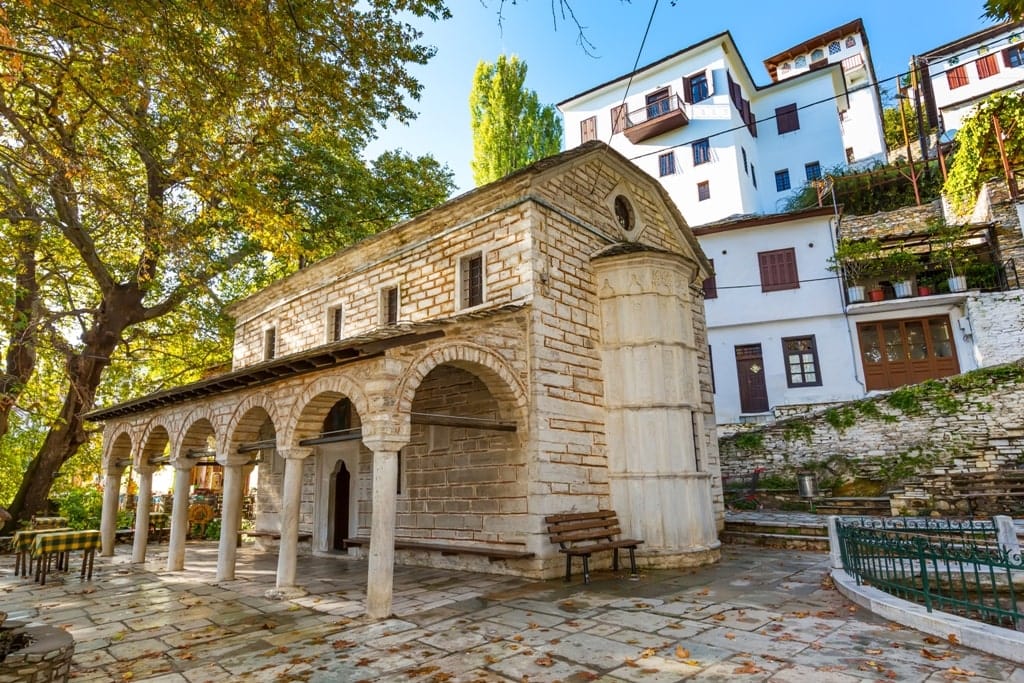
Mt. Pelion in Thessaly is one of the most beautiful mountain destinations in Greece: covered in lush forest, it has 21 villages scattered along its slopes. The Pelion villages are all astounding in their picturesque beauty and very characteristic architecture.
Enjoy beautiful squares drowned in huge trees that offer cool shade in the summer and beautiful snowy vistas in the winter. Stay warm in the traditional tower mansions with the iconic window seats from where you can enjoy beautiful views of the city of Volos below.
Of the most famous mountain villages to start with are Makrinitsa, Tsagarada, and Zagora, while others also combine the seaside with the mountainous atmosphere for a more flexible vacation if you are undecided!
11. Mt. Olympus
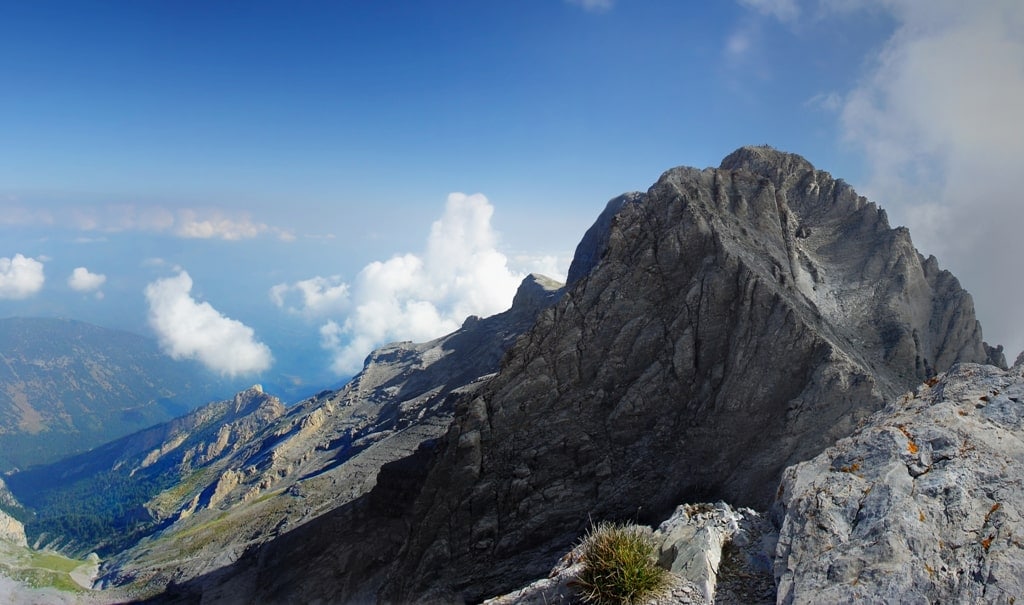
Perhaps the most famous mountain in Greece is also the tallest! The famous residence of the ancient Greek gods, Mt. Olympus is between Macedonia and Thessaly. Mt. Olympus is the perfect destination for hiking and climbing, for enjoying lush nature and beautiful, breathtaking views.
Climb to Greece’s highest peak, Mytikas, and enjoy walking among or above the clouds! Olympus’ lush vegetation (with some species of plant being solely endemic) and wide range of species of animals have made it one of Greece’s most important National Parks.
Use the village of Litochoro as your base of operations to roam all over Olympus, see the profile of Zeus himself at the peak of Stefani, and run at the Mt. Olympus Marathon!
12. Kavala
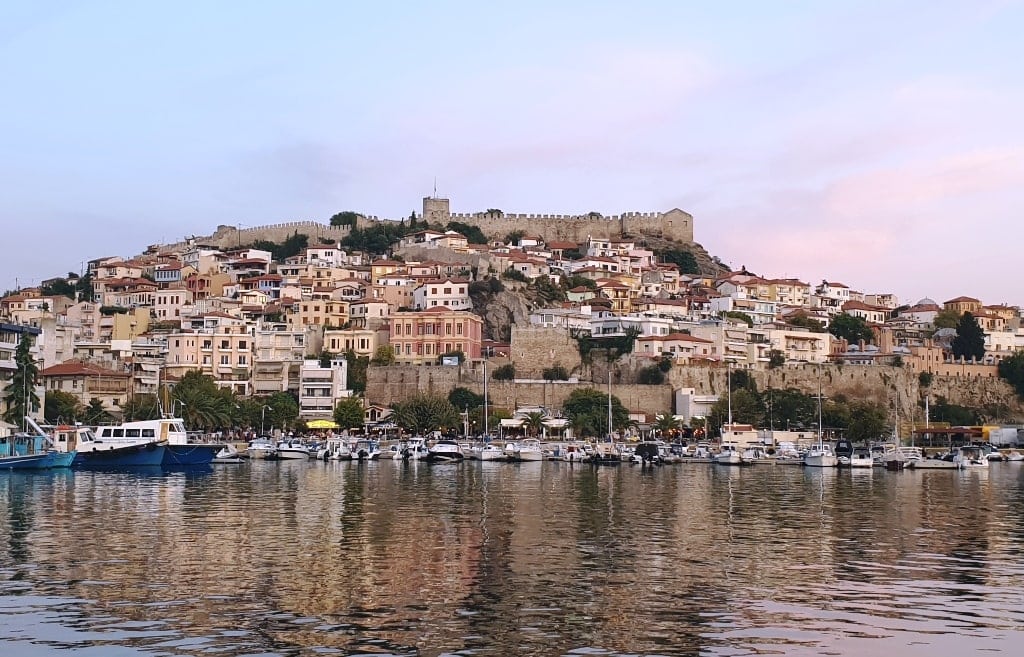
Kavala is one of the most prominent cities in the region of Macedonia. Its origins are lost in prehistoric times, and due to its being a port city, it has always been in the center of trade and commerce routes. Walk in Kavala’s old city, starting with the castle that dominates at its center.
Visit important monuments of Kavala’s history during the Ottoman occupation, such as the square of Mohammed Ali and the mosque of Huseyin Bay. As Kavala was the hub of the Greek tobacco industry, with a lot of recent political history revolving around it, don’t miss out on visiting the Museum of Tobacco.
Enjoy the romantic, picturesque promenade by the sea and the beautiful neoclassical houses of the modern city.
13. Halkidiki
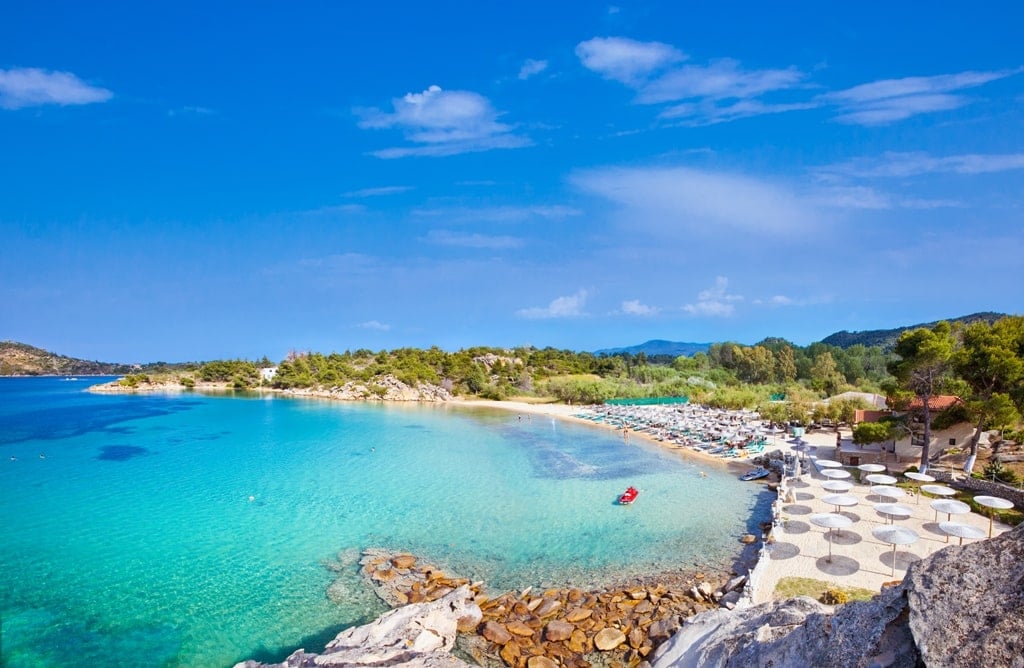
Halkidiki is a small peninsula in the region of Macedonia that features three smaller peninsulas, like a little hand.
A popular meme among Greeks asserts that “there’s nowhere like Halkidiki”! That’s how popular it is with the locals. It is renowned for its cosmopolitan seaside resorts, gorgeous non-organized, virgin beaches, beautiful lush verdant slopes, and impressive medieval and modern cultural and historical monuments.
The first two ‘fingers’ of Halkidiki are called Kassandra and Sithonia. The third one is Mt. Athos. In Kassandra, you will find the cosmopolitan luxurious hotels and beaches, while in Sithonia you will find the non-organized, virgin, unadulterated beaches.
In Mt. Athos, you can only go if you are male, as it is a closed monastic community of male monks, renowned for its Byzantine treasure troves as well as its high-quality wine, honey, cheese, and other produce.
14. Xanthi
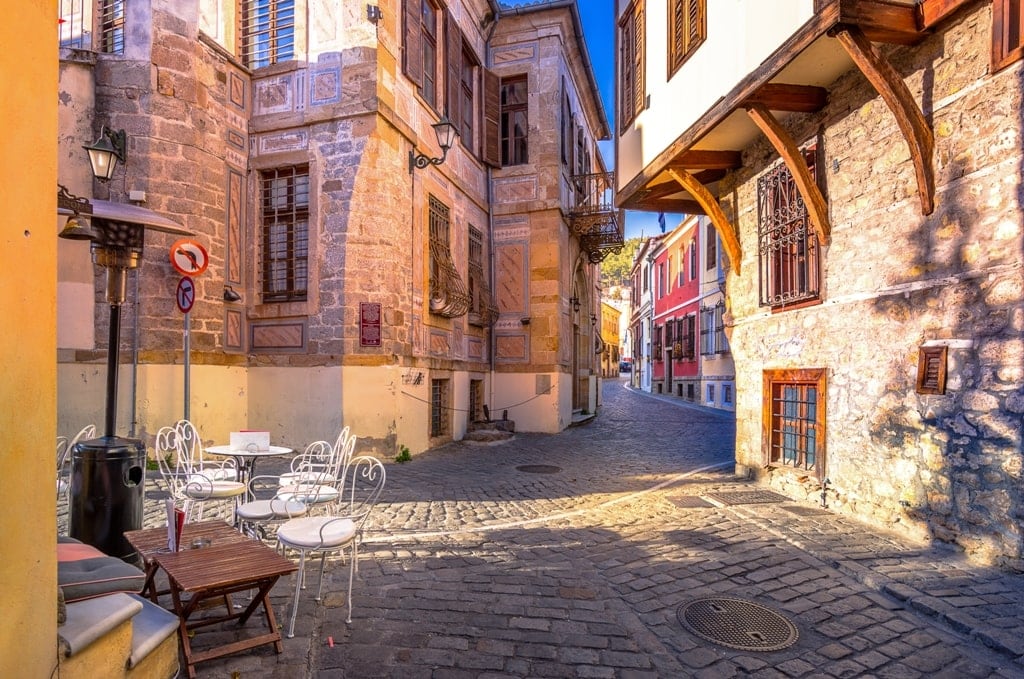
The city of Xanthi is also called “the fine lady of Thrace” and she is truly a jewel in the region’s crown.
Built at the base of the Rodopi mountain ridge, Xanthi is divided in two by the river Kosynthos. The western half consists of the old and new city, while the eastern half is less densely built with beautiful, lush natural beauty being the dominant element.
Xanthi retains its very strong, and very picturesque, traditional style of architecture and arrangement, which combines neoclassical, ottoman, and local artistic elements in a unique fusion. Walking in Xanthi’s streets is like walking the corridors of an open-air museum.
There are so many things to see in Xanthi that can’t possibly be described in just a few paragraphs, but you can be guaranteed an unforgettable experience no matter what your interests are!
15. Alexandroupoli

The beautiful seaside port city of Alexandroupoli in Thrace is one that sits right on the crossroads of Europe and Asia, connecting the East and the West. The city is stunning, full of gems of neoclassical architecture. It is one of the cities where the historical Orient Express made a stop on its Constantinople – Thessaloniki itinerary. It is the first city you will meet coming from Turkey or Bulgaria.
Walk its gorgeous seaside promenade, visit the Delta of the river Evros which is a Natural Park full of unique wildlife, and visit the cave church of St. Theodoron and the Museum of Folklore of Thrace. You won’t be disappointed!
Traveling to Mainland Greece
You will most probably arrive in Mainland Greece at one of its airports the most popular ones are the airport of Athens in Central Greece and the airport of Thessaloniki in Northern Greece. These airports have international and domestic flights all year round.
See below a full list of airports in Mainland Greece.
Airports in Mainland Greece
- Athens Airport “El.Venizelos” – International airport
- Thessaloniki Airport “Makedonia” – International airport
- Kalamata Airport “Captain Vassilis Constantakopoulos” – International airport
- Alexandroupoli Airport “Dimokritos” – International airport
- Kavala Airport “M.Alexandros” – International airport
- Araxos Airport (near Patras) – charter flights in high season
- Aktio Airport (near Preveza) – charter flights in high season
- Ioannina Airport “King Pyrros” – domestic flights only
- Kastoria Airport “Aristotelis” – domestic flights only
- Nea Anchialos Airport – charter flights in high season only
How to get around Mainland Greece
The most efficient way to travel to Mainland Greece is by car. It grants you the versatility to go where you want without limitations. If you are not a fan of driving, you can shorten the road trip (though it can be very picturesque) via train and plane.
I recommend booking a car through Discover Cars where you can compare all rental car agencies’ prices, and you can cancel or modify your booking for free. They also guarantee the best price. Click here for more information and to check the latest prices.
You can take the main Trainose railway itinerary (Athens to Thessaloniki and Athens to Alexandroupoli, as well as Athens to Patra) that can get you to most main cities. What you will need after is to rent a car to explore the area at your leisure.

